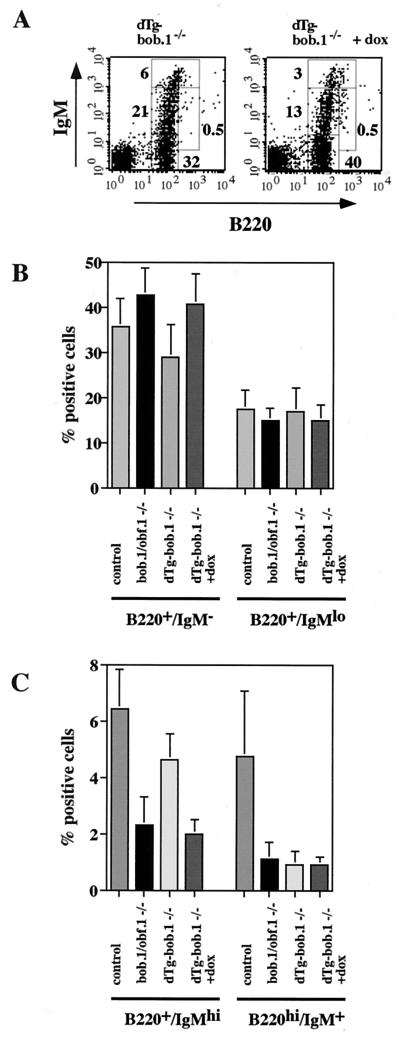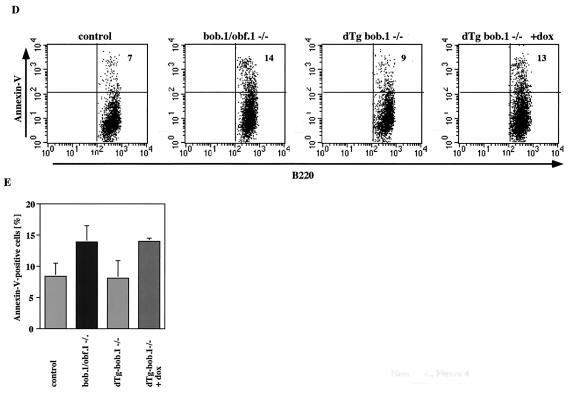FIG. 4.
Rescue of the early B-cell phenotype by conditional expression of transgenic BOB.1/OBF.1. (A) Flow cytometry analysis of bone marrow cells from 6- to 8-week-old dTg BOB.1/OBF.1-deficient mice (dTg-bob.1−/−) stained with anti-B220-FITC and anti-IgM-PE antibodies. Percentages of pro- and pre-B cells (B220lo IgM−), immature B cells (B220lo IgM+), T1 B cells (B220lo IgMhi), and recirculating B cells (B220hi IgM+) are indicated. Transgene expression was turned off by administration of 2 mg of doxycycline (+dox)/ml to the drinking water for 5 days. (B and C) Statistical analysis of the percentages of various B-cell populations from at least four independent mice in each group. (D) Representative analysis of annexin V-positive B cells in bone marrow of mice with the indicated genotypes and treatments. The levels of annexin V on the surface B220+ bone marrow B cells of control mice, BOB.1/OBF.1-deficient mice, dTg BOB.1/OBF.1-deficient mice not treated with doxycycline, and dTg BOB.1/OBF.1-deficient mice treated with doxycycline (left to right) were measured with an anti-annexin V-FITC antibody by flow cytometry. Doxycycline had no effect on the percentage of annexin V staining cells in wild-type or BOB.1/OBF.1-deficient animals not bearing the tetracycline-regulated transgene. (E) Percentage of annexin V-positive bone marrow B cells. Data are shown as averages (± standard deviations) from three independent animals for each genotype.


